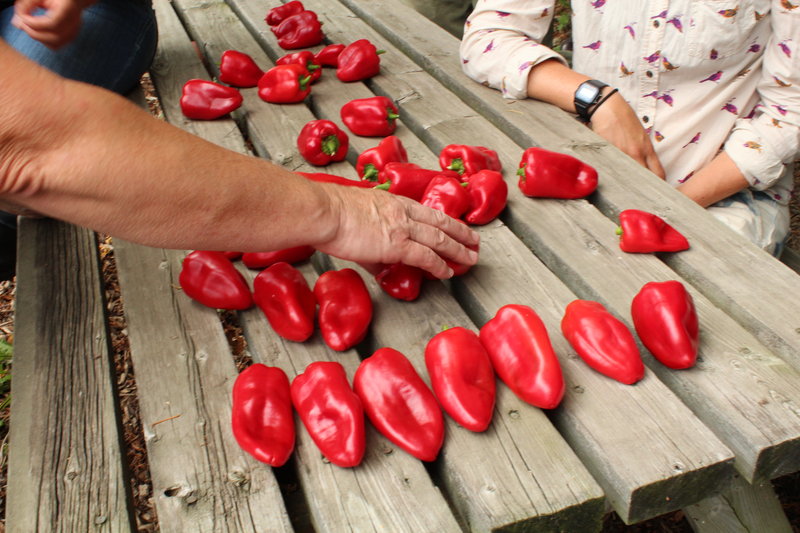Back to February 2016 Newsletter
Selecting and Rogueing to Improve Crop Genetic Integrity

Paul Hrycyk
Selection improves the genetic integrity of the crop and rogueing is the process of examining a crop and removing unwanted individuals. Plants can be rogued for a number of reasons: off-type color, shape, or plant growth characteristics, presence of disease, insect damage, or low vigour. Timing is important when it comes to rogueing. It is crucial to remove undesirable individuals from the plant population before flowering, so they don’t cross-pollinate with the remaining seed crop.
Alternatively, you can select for traits you want the progeny to exhibit, such as early flowering, certain colours, fruit shape or plant stature, disease resistance and hardiness. Selection can also be used to create new varieties. Some growers start with a hybrid, “destabilize” it by continuing to save seeds and grow it out, and then embark on the often-painstaking multi-year process of selecting for the traits they want the new variety to exhibit.
This is how the Bizhiki tomato, one of the Vegetable Seed Producers Network (VSPN) varieties, was created. Ontario farmer Cory Eichman started with the hybrid tomato variety ‘Buffalo’ and selected for a great tasting greenhouse tomato that doesn’t crack. After selecting fruits that met these criteria and harvesting seeds from them year after year, he eventually had a uniform, bright red, globe shaped, open pollinated tomato that grew to 5-8cm with no cracking. He named it ‘Bizhiki’, the Anishnabe word for Buffalo.
Another VSPN variety, the ‘Lipstick’ pepper, is an early producer, ready to harvest a full week ahead of other bell peppers at 70 days. The fruits should be selected for a pimiento-type, oblong shape at about 4-5 inches long. They should be medium to thick walled, crunchy, and juicy. Since these peppers should also produce well in cooler growing conditions, any plants that exhibit low vigour or are slow growers in cool weather should be rogued out of the seed harvest population.
Whether you grow a few tomato plants in your backyard, or have a huge operation devoted to seed production, removing off-type plants and selecting only the best plants and fruits is crucial to maintaining high quality seed in your collection or store. Continuous observation, from the seedling to harvest stage, is also key to selecting the best fruits from the top-performing plants and removing off-types before they can cross-pollinate.
Learn more about rogueing and selection at a workshop hosted by Greta Kryger and Bob Wildfong in Ottawa on March 4th. Find out more at http://justfood.ca/blog/2016/02/08/workshops-intensive-commercial-seed-saving-march-4/
This project was funded in part through Growing Forward 2, a federal-provincial-territorial initiative. The Agricultural Adaptation Council assists in the delivery of Growing Forward 2 in Ontario.

**
Paul Hrycyk is the coordinator of the Vegetable Seed Producers Network (VSPN).
Not yet a member?
An annual membership to Seeds of Diversity gives you access to our seed exchange, seed grow-out programs, and our online news.

We depend on donations to do our work.

Thank you for your support!
